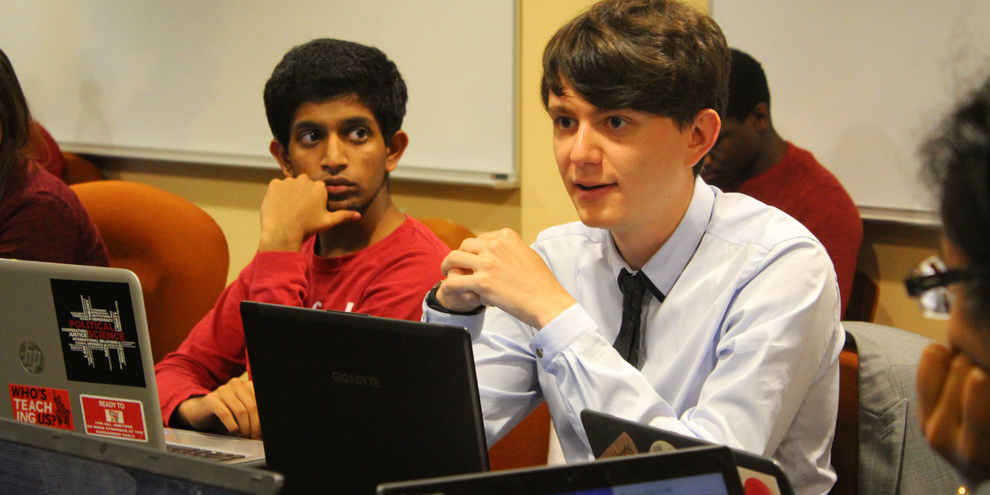Although spring quarter at Stanford is known for sunny weather and parties, it is also election season on campus. In a few weeks, students will choose 15 new undergraduate senators to serve for a year as their official representatives.
Obscured by the recent flurry of flyers, promotional emails and in-person campaigning is the fact that many students are unsure of what the Undergraduate Senate does.
“I don’t know the first thing about the Senate,” said Emily Jusuf ’20, a Daily staffer, when asked for her opinion on the body.
“I don’t know anything,” echoed Brian Morris ’20. “Don’t really have opinions on it.”
Their perspectives were not uncommon. A few graduate students admitted that they were not even aware that the Undergraduate Senate or Graduate Student Council exist.
This lack of knowledge about representatives stems in part from the type of work the senators perform, said Undergraduate Senate Chair Shanta Katipamula ’19.
“We do a lot that happens behind the scenes, and not all of it is flashy, headline-making stuff,” she said.
Examples of such work, she said, include redesigning Stanford’s Not Alone website, a central compilation of resources related to sexual assault, to improve it for sexual assault survivors. Another example she gave was the Senate’s efforts to expand sexual assault programming to all four class years; right now, programming is aimed at freshmen.
“It’s not always the fastest turnaround,” Katipamula added, referring to the pace of the Senate’s work. “Not because we don’t want it to be fast, but because that’s how this institution is set up.”
The Senate’s main roles can be lumped into two categories: approving funding and advocacy. All voluntary student organizations (VSOs) are familiar with the process of applying for and receiving funding from Senate. Meanwhile, advocacy for the student body encompasses a broader umbrella of activity. In the past, senators’ advocacy has ranged widely from passing resolutions on fossil fuel divestment to working with the administration to push for better sexual assault reporting to supporting Santa Clara County’s Measure B, a tax measure for road and transit improvements.
The role of undergraduate senators recently came under fire from the Stanford Review. The Review’s Feb. 27 article, titled “Dethrone the ASSU: Get the Money Out of Stanford Politics,” disparaged senators as overpaid “royalty” who do “insignificant work.”
“Senators spend most of their time approving budgets — when most could be reviewed through petitions like the ones in the spring — and passing resolutions that have no binding effect,” the Review argued. “How is paying students to “debate” and pass a condemnation of Trump’s immigration policy — an issue on which nearly all students already agree and which will have precisely no impact — a prudent use of university funds?
The post launched a failed effort to place ending compensation for senators and ASSU cabinet members on the upcoming elections ballot. Although the article contained multiple inaccuracies, the notion that senators do not accomplish much is not a new one.
“Is it frustrating for students what we do sometimes?” Katipamula said. “Yes. It’s frustrating for me. But I think it’s a necessary part of creating change at Stanford.”
Katipamula maintained that students who complain about the Senate accomplishing little do not see much of the work senators do. She also noted that the formal label of being a democratically elected senator holds weight when meeting with the administration on a variety of issues.
“There’s many different ways to create change at Stanford, and oftentimes it takes people from all different areas and groups pushing for change,” she said. “The ASSU is one of those groups.”
Contact Sierra Garcia at sgarcia3 ‘at’ stanford.edu.
